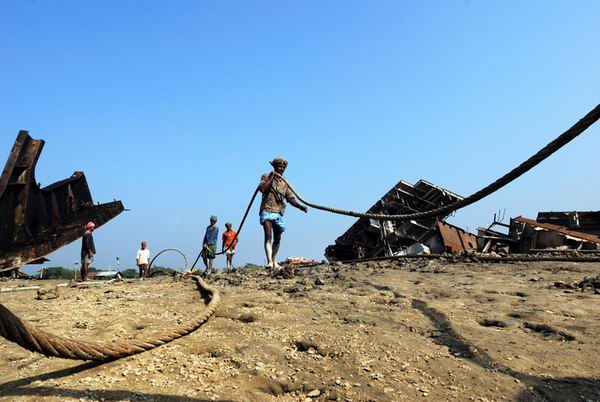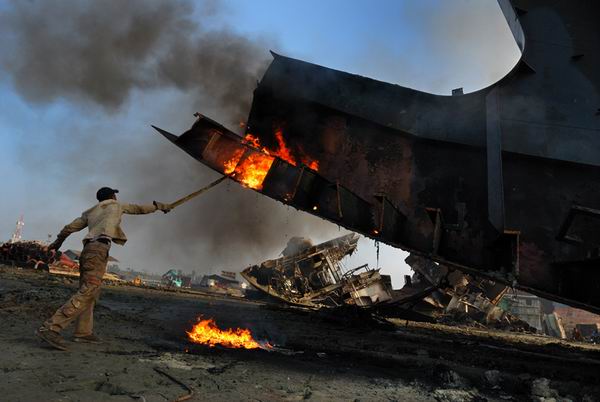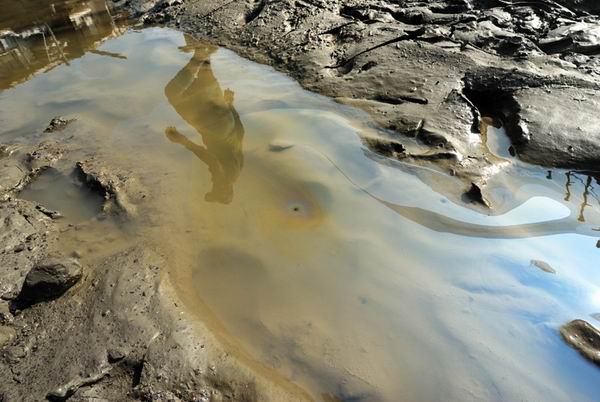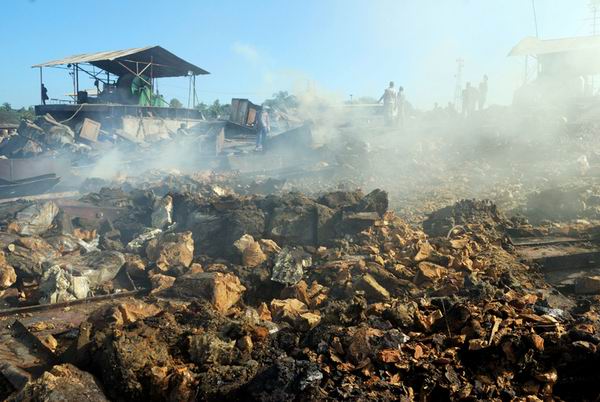|
|
|||||||||||
|
10-01:A worker is carrying a heavy metal rope in the ship breaking yard in Chittagong, Dec. 10, 2009. Near about 50,000 workers mostly from 14-40 years works in this demolishing factory. 2009年12月10日,一名工人在孟加拉国吉大港的拆船厂工作。约50000工人在孟加拉吉大港从事这个行业。
10-02:Poisonous fumes of toxic gases and other substances which causes serious threats to the environment are seen at the ship breaking yard in Chittagong, Bangladesh, Dec. 10, 2009.这是2009年12月10日拍摄的孟加拉国吉大港有毒材料污染下的拆船厂。
10-03:Workers cutting heavy metal tube and plate bit by bit in Chittagong, Bangladesh, Dec. 10, 2009. They usually work without proper safety gear and work for more than 12 hours every day. 2009年12月10日,在孟加拉国吉大港的拆船厂,工人切割钢材,他们没什么防护,每天工作超过12个小时。
10-04:Workers uses gas cutters to cut down the large ship in small metal plate in Chittagong, Bangladesh, Dec. 10, 2009. 2009年12月10日,工人在孟加拉国吉大港的拆船厂工作。
10-05:Men works in group to carry the heavy metal rope and took it down the shore to fix it with the ship, which will be later pulled by the machine near the yard in Chittagong, Bangladesh, Dec. 10, 2009. 2009年12月10日,工人在孟加拉国吉大港的拆船厂工作。
10-06:A workers leg is muddle with clay, burned oil and other substances. 踩在泥巴、油中的工人脚。
10-07:Toxic fumes and other poisonous gas are released in the atmosphere in Chittagong, Bangladesh, Dec. 10, 2009. 2009年12月10日,工人在孟加拉国吉大港的拆船厂,有毒气体燃烧污染空气。
10-08:Burned oil is spilled all over the yard which causes serious threat to the aquatic life in Chittagong, Bangladesh, Dec. 10, 2009. 2009年12月10日,工人在孟加拉国吉大港的拆船厂,油到处都是,对水生生物造成巨大威胁。
10-09:A young worker got wound in his hand while working. Huge casualties occurs often in these demolishing factory but the cries of these poor people always remain unheard.一个工人受伤了。这些工厂有很高的伤亡率,但是这些穷人没什么发言权。
10-10:Poisonous Asbestos lie down in the yard all around the yard causing alarming threat to the environment.有毒的石棉堆到到处都是。
|










